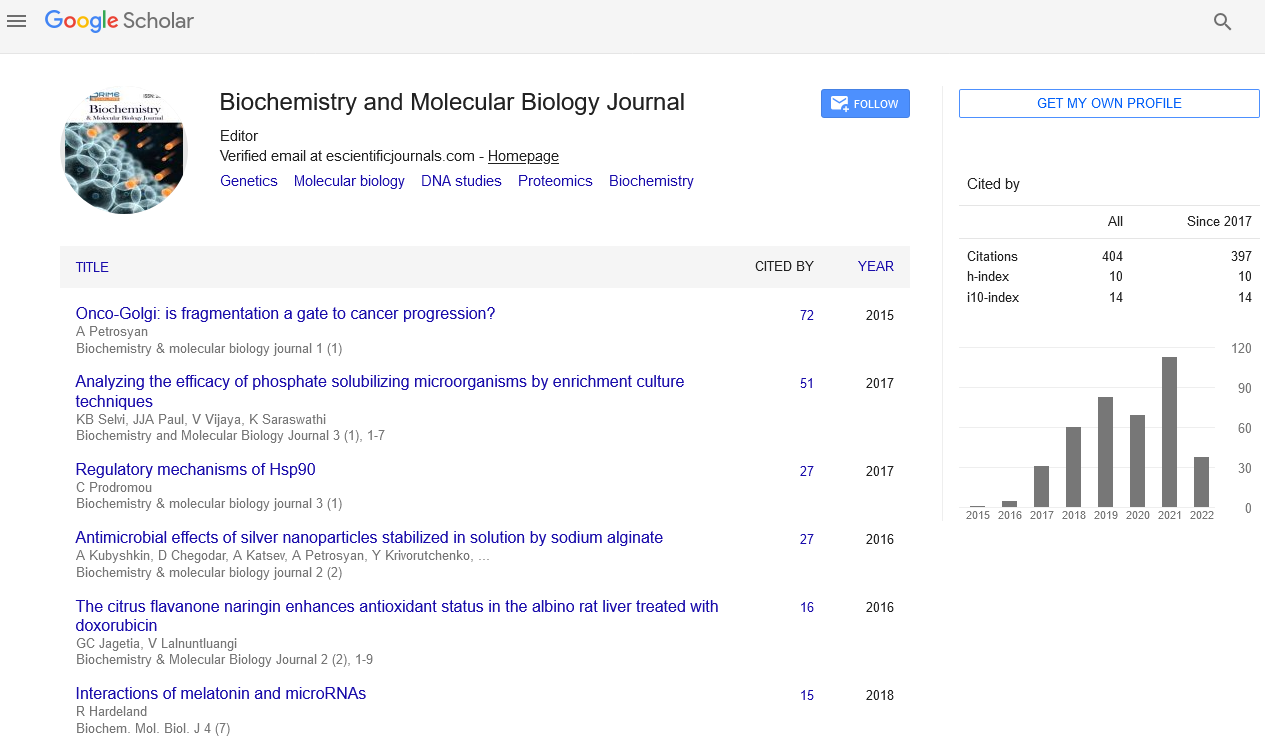Commentary - (2022) Volume 8, Issue 7
Ethylene Signalling under Anxious Conditions Knowledge-Based
Methodology
Yu Wang*
Department of Biochemistry, Nankai University, China
*Correspondence:
Yu Wang, Department of Biochemistry, Nankai University,
China,
Email:
Received: 29-Jun-2022, Manuscript No. IPBMBJ-22-14156;
Editor assigned: 01-Jul-2022, Pre QC No. IPBMBJ-22-14156(PQ);
Reviewed: 15-Jul-2022, QC No. IPBMBJ-22-14156;
Revised: 20-Jul-2022, Manuscript No. IPBMBJ-22-14156(R);
Published:
27-Jul-2022, DOI: 10.36648/2471-8084-8.7.82
Description
The weakening or alteration of plants’ morphological, physiological,
biochemical, physical, and sub-atomic properties is mostly attributed
to various ecological concerns. It has been estimated that
ecological loads account for around half of yield misfortune. Plants
develop defence systems to temper the harmful effects of pressure,
such as the initiation of motioning various phyto-hormones.
Ethylene functions as a pressure chemical among phyto-hormones.
However, in addition to ethylene, ABA is also thought of
as a pressure chemical.
This survey has covered the guidelines for ethylene production,
the flagging transduction mechanism, the effects of ethylene on
pressure reactions, and the effects of ecological pressure. The
optimal level of ethylene production and the flagging pathway
control many metabolic cycles and control the plant’s cell reinforcement
and protection, which varies from plant to plant. In
conjunction with auxiliary metabolites, osmolytes, and carbohydrates,
ethylene stimulates potential pressure resistance systems
in plants. By promoting plant digestion, the interaction of ethylene
with nutrients and phyto-hormones promotes plant development.
Under various stresses, the various reactions of ethylene may
amaze us. However, understanding the cause of the ethylene reaction
is also useful. To summarise the information, we may argue
that ethylene, depending on the load, could either be a good
or bad stress resistance controller. All things considered, it is undeniably
present under pressure and causes diverse reactions in
plants. Where it encounters resistance, it triggers the articulation
of stress-related qualities and anti-oxidative chemicals, and it may
collaborate with other chemicals to lessen pressure. If aversion to
stretching should occur, excessive ethylene boosts ROS production,
senescence, and development reduction.
The control of FA uptake, unbiased lipid blending, and unbiased lipid degradation, which play different roles in the cell, including
the ability of high energy sources and the regulation of oxidative
pressure, among others, directs LD biogenesis. Despite this, there
is mounting evidence that these neutral, lipid-rich organelles differentially
control illnesses caused by DNA infection. Adenoviruses
and hepatitis B infections do really alter lipid digestion within
contaminated cells to favour their reproduction, as shown in this.
On the other hand, LD collection specifically affects the propagation
of infection in herpesvirus illnesses. In general, our analyses
highlight how unbiased digestion plays an important role in the
replication of DNA viruses through a variety of components.
In summary, this audit provides information about how ethylene
motioning works to control plant cycles and produce an acceptable
harvest under ideal and natural pressure conditions. A crucial
role in guiding plant development and improvement will be played
by the collaborative knowledge and fresh perspectives of ethylene
flagging, as well as pressure resistance to increase endurance and
adapt to changing situations. Because of numerous ecological concerns,
detailed investigations into ethylene biosynthesis and flagging
may expand the applications of biotechnology approaches for
producing improved and novel harvest variations. Soon, ethylene
application to various agrarian interests may be expanded for agribusiness
reasons. Future focus will be on separating ethylene’s antagonistic
and synergistic roles from other alarming signals.
Acknowledgement
The authors are grateful to the journal editor and the anonymous
reviewers for their helpful comments and suggestions.
Conflict of Interest
The authors declared no potential conflicts of interest for the research,
authorship, and/or publication of this article.
Citation: Wang Y (2022) Ethylene Signaling under Anxious Conditions Knowledge-Based Methodology. Biochem Mol Biol J. 8:82.
Copyright: © Wang Y. This is an open-access article distributed under the terms of the Creative Commons Attribution License,
which permits unrestricted use, distribution, and reproduction in any medium, provided the original author and source are
credited.

